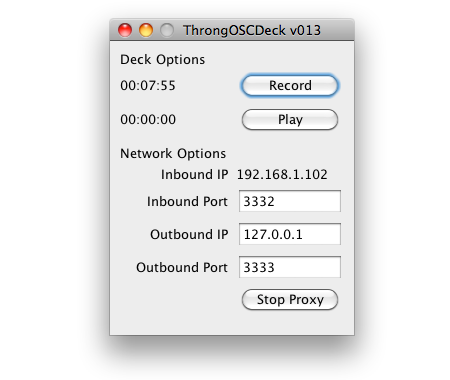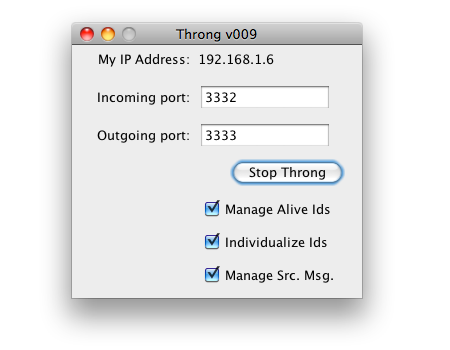My colleague Simon Lehmann has built the tracking framework Actracktive.
Category Archives: tuio
Surface2TUIO – Microsoft Surface 2 aka Samsung SUR40 TUIO Overlay [Update]
As I have read in a comment in the blog accompanying our TUIO AS3 project, there is a software overlay that you can use on a Surface 2 tabletop system to forward the Microsoft touch and fiducial events via TUIO to TUIO-based apps. I have not tried it so far but hopefully I will have …
Continue reading “Surface2TUIO – Microsoft Surface 2 aka Samsung SUR40 TUIO Overlay [Update]”
ThrongOSCDeck – an OSC & TUIO Recorder and Player [Update]
I have been looking for an application on the Internet that allows to record TUIO streams. However, I did not find a sufficient solution for this problem. Thus, I decided to write my own application called ThrongOSCDeck that can accomplish this task. It builds upon my Throng application that can be used to multiplex TUIO …
Continue reading “ThrongOSCDeck – an OSC & TUIO Recorder and Player [Update]”
Throng – a Cross-Platform Multiplexer for Tuio Messages and Packets
Throng (Tuio multiplexeR that crOps and Globalizes) provides a Tuio multiplexer with added benefits written in Java.
Adobe Air 2 Beta 2 VerifyError: Error #1014 (under Mac OS X and Win XP)
Recently, I made my first steps in Adobe Air 2. As Air 2 is still in Beta version (currently in Beta 2, which was released on February 2, 2010) there still could be some problems when working with it.
Stantum SMK-15.4 Multi-Touch Development Kit
I recently had opportunity to lay my fingers onto a Stantum SMK-15.4 Multi-Touch Development Kit. The SMK-15.4 is a TFT panel with a resolution of 1280*800 pixels, which is equipped with a foil that contains a net of transparent capacitors, which can track multiple touches. Thus, the SMK-15.4’s touch principle is similar to the iPhone’s. …
Continue reading “Stantum SMK-15.4 Multi-Touch Development Kit”



